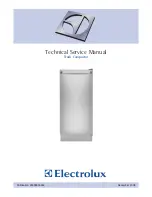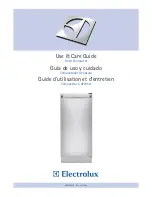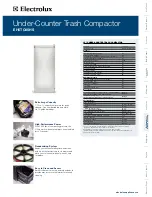
EFFECTIVE USE OF RIPPER
• The optimum shank angle to the ground is approximately
90 ° (the cutting edge angle is 45 to 50 °).
• The ripper can dig rocks even if the shank is tilted out (rip-
per point tip angle is large), if they are relatively soft (elas-
tic wave 1200 m/s or less).
• If the ripper digs relatively hard rocks with the shank tilted
out, ripper point tip (A) is worn uselessly and its cutting
performance is deteriorated.
• While working with a variable ripper, if the track shoe starts
slipping because of large boulders or a hard rock-bed, use
the tilt cylinder.
• It is very important for effective use of the ripper to select
proper ripper points according to the rock condition.
Since various ripper points are prepared by the type of
rock, select proper one. For details, see “SELECTION
PROCEDURE OF RIPPER POINT (6-4)”.
WORK OF DIGGING UP LARGE BOULDERS AND ROCK-BED
While working with a variable ripper, if the track shoe slips or
the travel speed decreases on large boulders or a hard rock-
bed, use the tilt cylinder to dig up the large boulders and rock-
bed.
OPERATE ON SLOPE
When a variable ripper is used, select dimension L by adjusting the length of the tilt cylinder.
OPERATION
MACHINE OPERATIONS AND CONTROLS
3-193
Summary of Contents for D155AX-8E0
Page 2: ......
Page 11: ...Do not repeatedly handle and lift loads FOREWORD VIBRATION LEVELS 1 9...
Page 24: ......
Page 312: ......
Page 397: ...SPECIFICATIONS 5 1...
Page 404: ......
Page 405: ...REPLACEMENT PARTS 7 1...















































